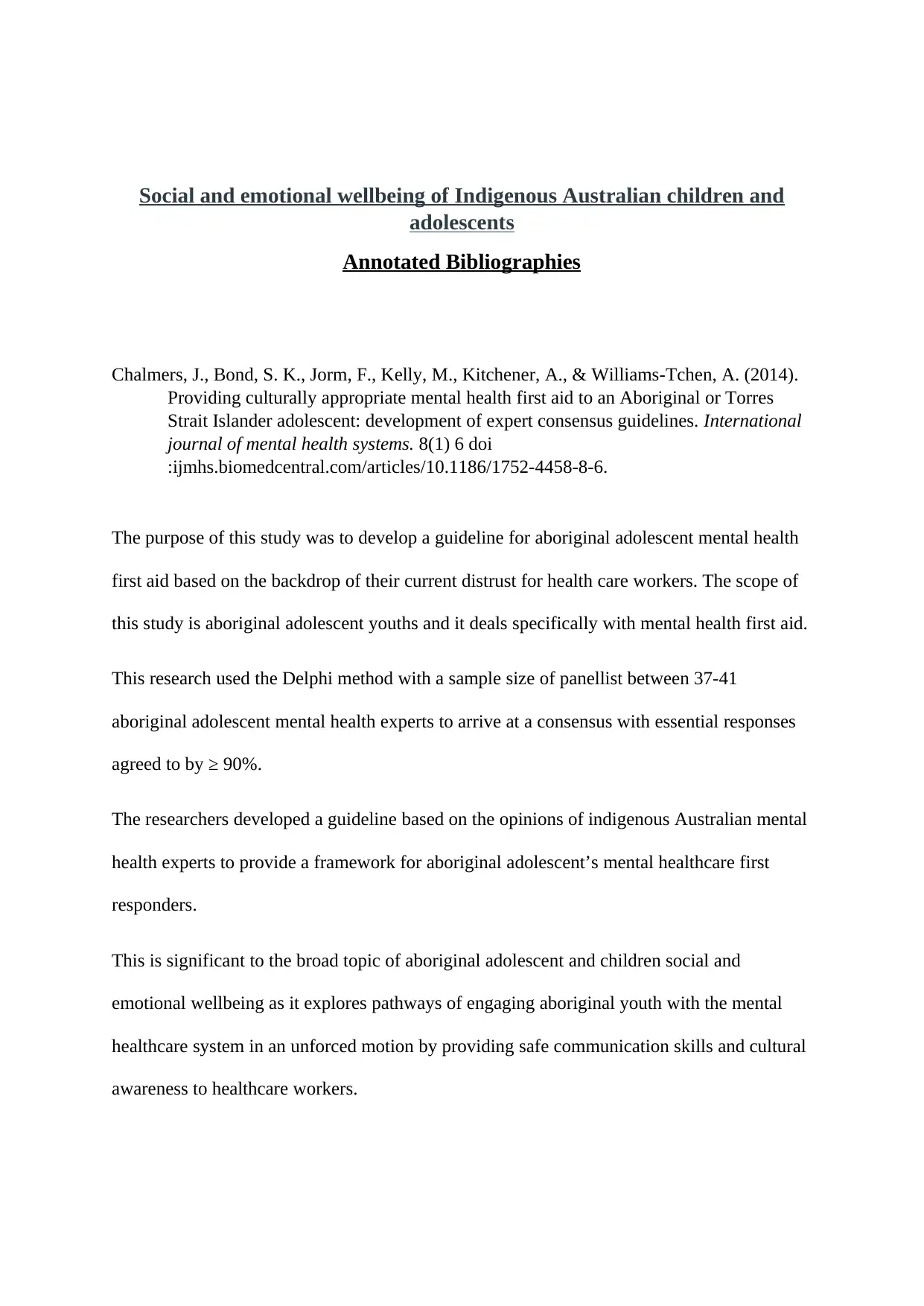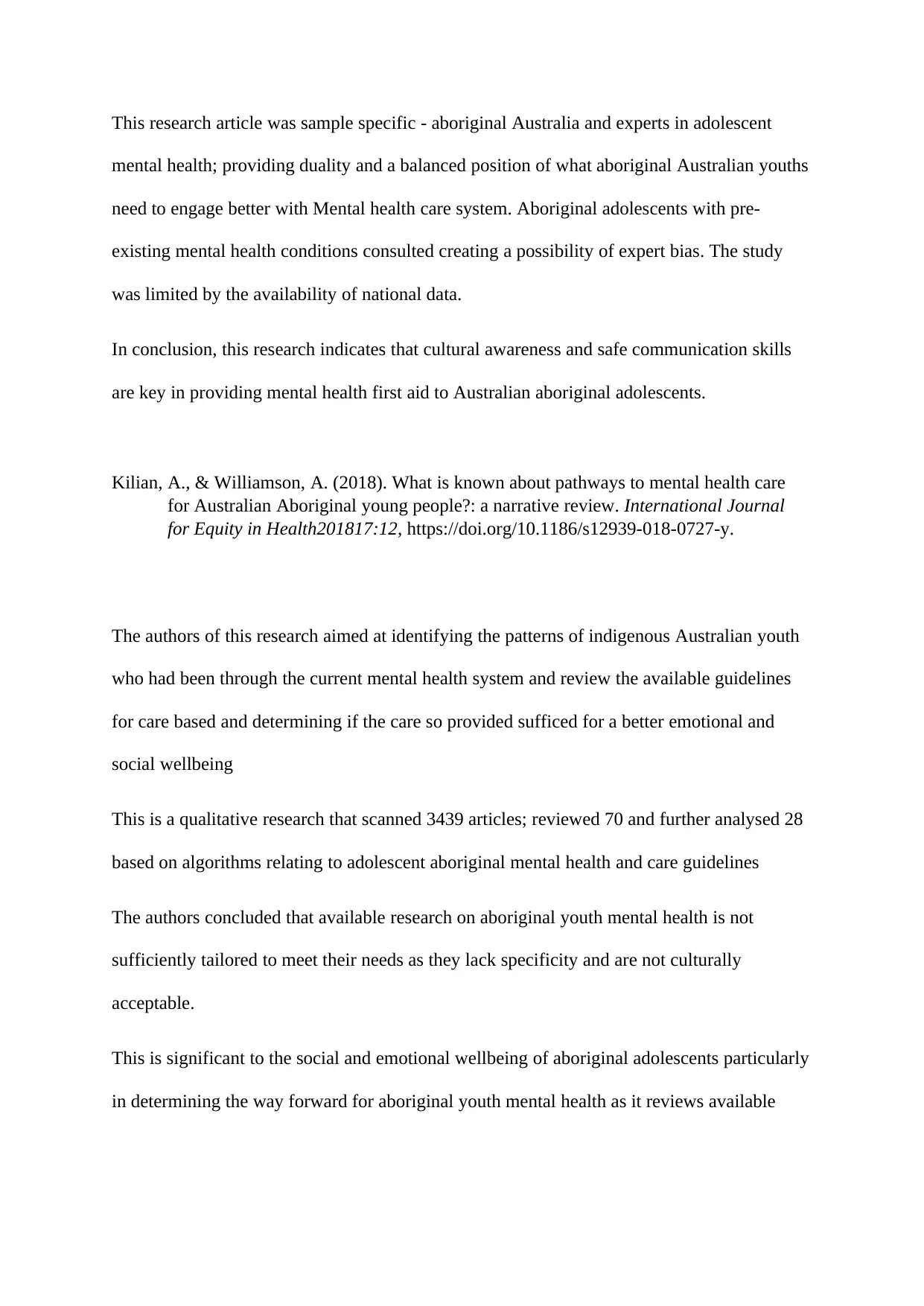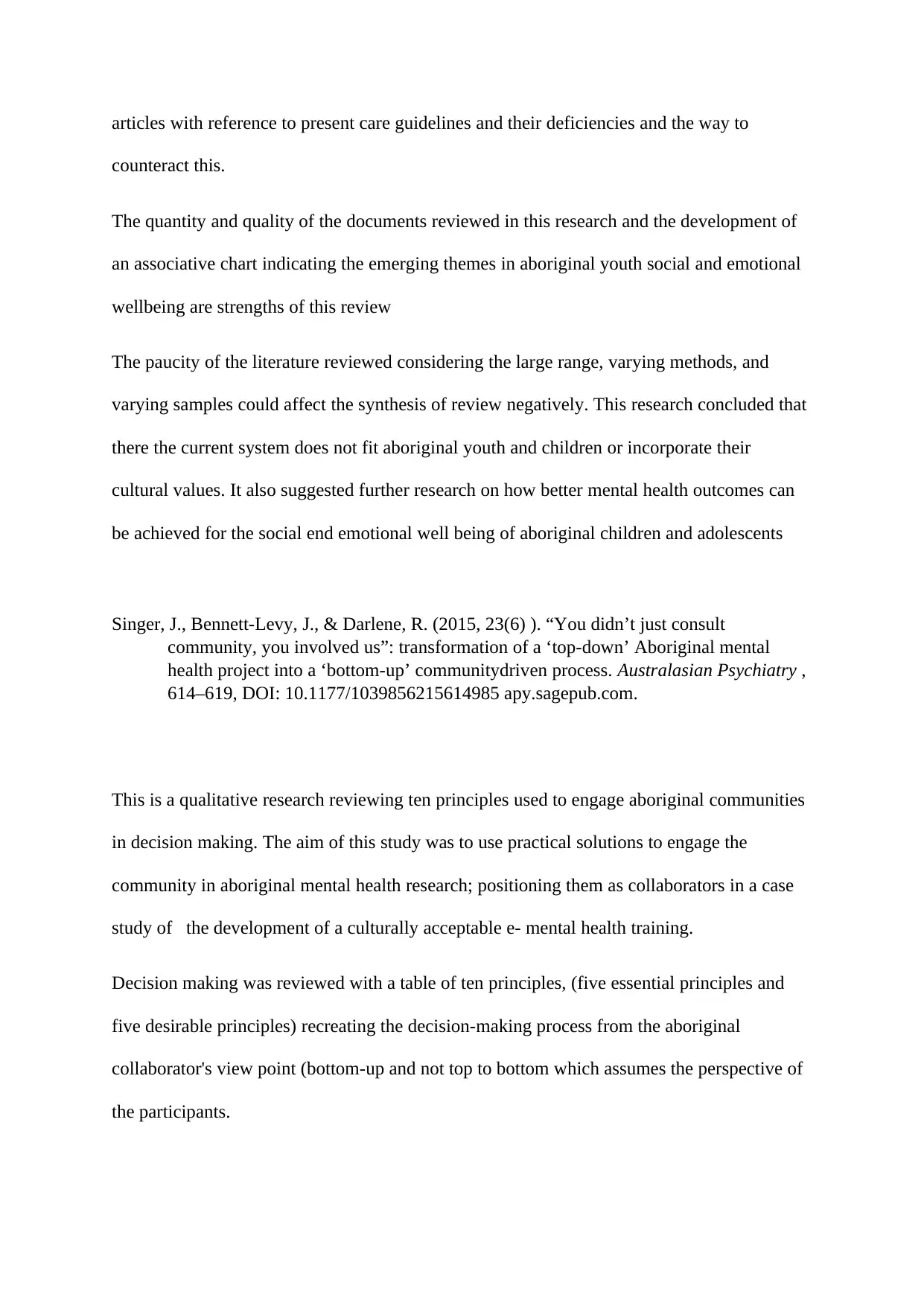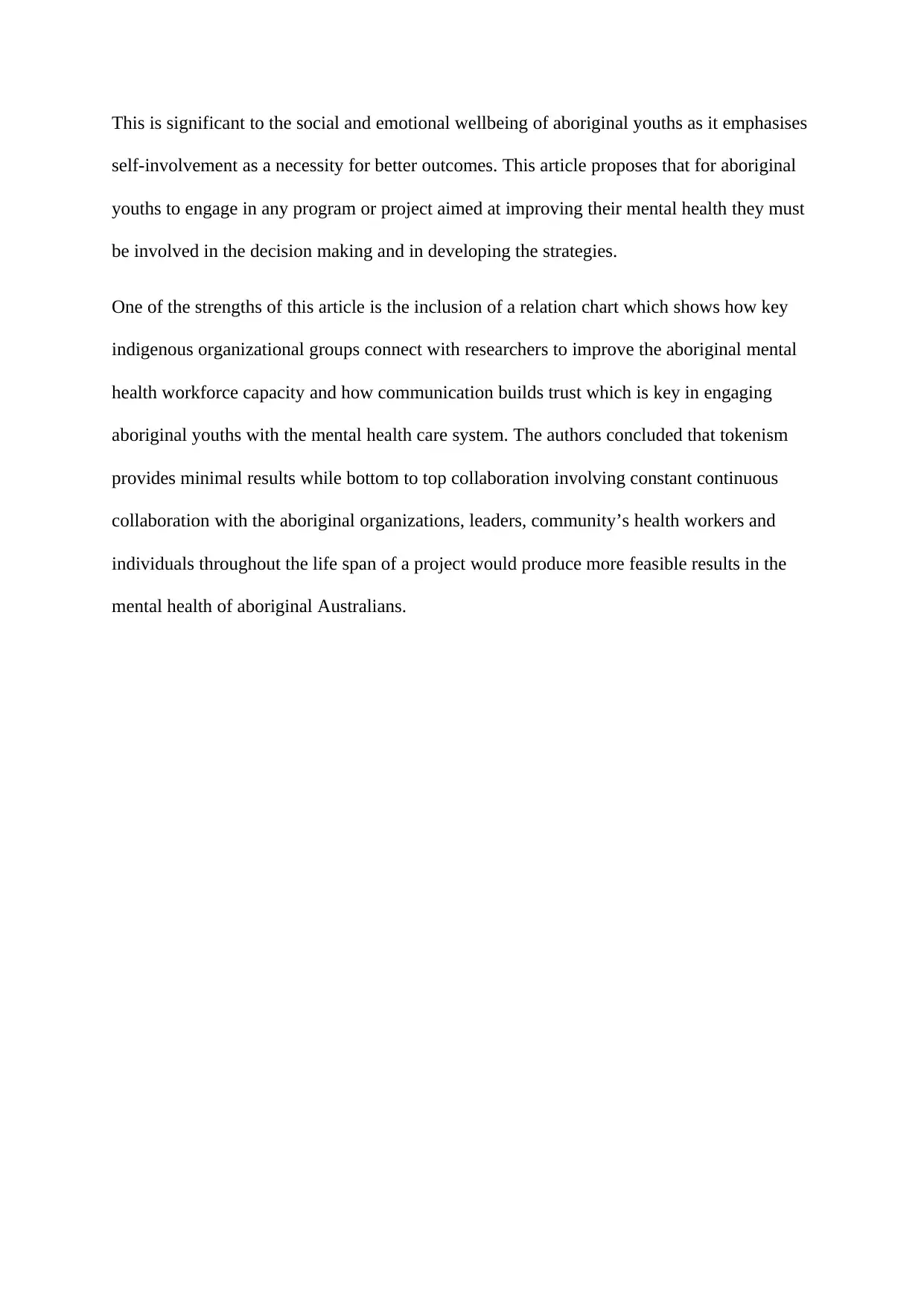Annotated Bibliography: Indigenous Australian Children and Adolescents
VerifiedAdded on 2023/04/08
|4
|848
|132
Annotated Bibliography
AI Summary
This annotated bibliography examines three key research articles focused on the social and emotional wellbeing of Indigenous Australian children and adolescents. The first study by Chalmers et al. (2014) explores the development of culturally appropriate mental health first aid guidelines for Aboriginal adolescents, emphasizing the importance of cultural awareness and safe communication skills. Kilian & Williamson (2018) review existing literature on pathways to mental health care for Indigenous youth, highlighting the limitations of current systems and the need for culturally tailored approaches. Finally, Singer et al. (2015) discuss the transformation of a mental health project into a community-driven process, stressing the importance of involving Indigenous communities in decision-making to improve outcomes. The bibliography highlights the critical need for culturally sensitive mental health services and the importance of community involvement in addressing the unique needs of Indigenous Australian children and adolescents.
1 out of 4











![[object Object]](/_next/static/media/star-bottom.7253800d.svg)